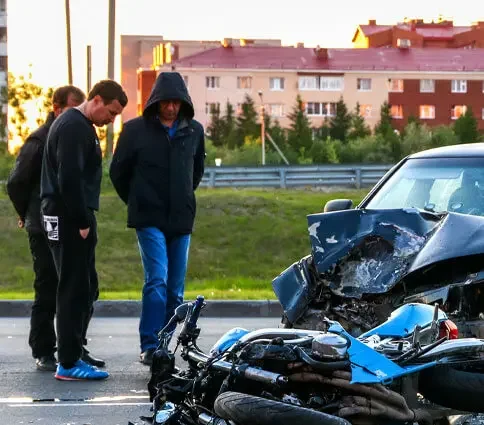- Home
- Practice Areas
- Service Areas
- Resources
- Testimonials
- About
- Contact Us


Every motorist is responsible for exercising caution while driving. Even so, it is also true that some roads are more dangerous to travel than others. The reasons specific roads and intersections might be more hazardous include many factors. These include road design, natural geographic features, traffic density, and other factors.
The Maine car accident attorneys at The Mann Law Firm are committed to keeping our community safe. That’s why we have provided this guide to the most dangerous roads in Maine.
We hope you’ll keep this guide in mind while traveling. It is vital to be especially cautious during spring and summer when traffic is expected to increase with out-of-town visitors:
Any resident of the area will not be surprised to find Route-1 on the list of most dangerous roads in Maine. Simply look up “Route 1 Maine accident today” and you are likely to see an accident report. This road has many twists and turns as it runs up the coast and through the woods from Kittery to Fort Kent. Some other factors that make this road particularly hazardous are:
Each year, an average of ten fatal crashes occur along this route.
I-95 is a busy roadway that is the main interstate that runs from the border of New Hampshire to Houlton, Canada. Motorists along this route often run into significant congestion, particularly near Portland, Bangor, Augusta, Lewiston, and Auburn. There is a large volume of commercial traffic along this highway. This poses a particular threat to drivers, especially in and around Augusta.
Also known as Old Canada Road, Route 201 is a popular route for visitors to our state. It is also a heavily-trafficked commercial route to Canada. It is not uncommon to find large commercial vehicles on this road, heading to the international border crossing at Sandy Bay. Because of the heavy tourist and commercial traffic, this road easily makes the list of most dangerous roads in Maine.
Running about 180 miles from Stonington to Jackman, Route 15 connects several towns in Maine. This includes Bangor, Brewer, Orrington, Bucksport, Monson. Because of the heavy traffic on this road, injury and fatal accidents are, unfortunately, incredibly common on this road.
According to the Maine Department of Transportation (MaineDOT), a high crash location is: an intersection where there are a significant number of collisions, volume of traffic, pedestrian fatalities, and other factors.
More specifically, a high crash location is any intersection that hasm over a 3-year span:
According to MaineDOT and WMTW, these are the top ten high crash locations in Maine:
1) Elm and High Streets – Auburn
2) Washington Street and Maine Turnpike off-ramp – Auburn
3) Cony Circle and Bangor Street – Augusta
4) Memorial Circle and Western Avenue – Augusta
5) I-95 ramp to Western Avenue – Augusta
6) Veranda Street to I-295 on-ramp – Portland
7) Congress Street to I-295 on and off-ramps – Portland
8) Forest Avenue to I-295 off-ramp – Portland
9) Main Street and Alfred Road roundabout – Sanford
10) Warren Avenue and Cumberland Street – Westbrook
If you’ve been hurt in a collision in Maine, know that you are not alone, and legal help is available to you. In the aftermath of a crash, it is common for people to be in shock, dazed, and unsure of what to do to protect themselves. In the days and weeks after a crash, it is equally important to take specific measures to protect any injury claim you need to make. And this is particularly true if another driver’s negligence caused your crash.
After a crash, it’s crucial to take the following steps:
1) Get to safety. This includes moving your vehicle to the shoulder, if possible.
2) Check for injuries and see if your passengers or others are injured.
3) Contact the police.
4) Seek medical attention as soon as possible (even if you feel your injuries might be minor).
5) Exchange insurance information and get the contact information of any other drivers involved. Also, be sure to collect the contact information from any witnesses who saw the accident.
6) Take pictures of the vehicles, the damage, the crash scene, and any injuries you’ve suffered.
In the days and weeks following a crash, make sure to:
1) Follow your doctor’s orders. Don’t skip treatments or refuse any medical treatment they recommend.
2) Keep track of all of your medical bills, lost wages, travel expenses for treatment, vehicle repairs, rental costs, and any other expenses you incur due to the accident.
3) Keep a journal of the pain you are experiencing,. This includes any emotional trauma you are dealing with, and anything else associated with the accident and your injuries.
4) Refrain from posting to social media. Anything you post could be taken out of context or used by the other party’s insurance adjusters to deny or diminish your claim. It’s best to stay off social media entirely in the aftermath of a serious injury accident.
5) Contact an experienced injury attorney to represent you. You have enough to deal with when trying to recover from an accident. Don’t let the insurance companies take advantage of your situation. Let a skilled lawyer handle all the communications and negotiations for you, while you focus on healing.
For nearly two decades, Attorney Christiana A. Mann and her team at Mann Law have zealously advocated for those who’ve been hurt in Portland, Bangor, and across the state of Maine. We have the skills, resources, and experience necessary to get you justice and fair compensation if you’ve been injured in an accident on any of these roads, intersections, or anywhere else.
We’re ready to stand up for you. Find out why so many people in our state have turned to us in their time of need. Call our skilled Maine car accident lawyers or contact us online for a free consultation.